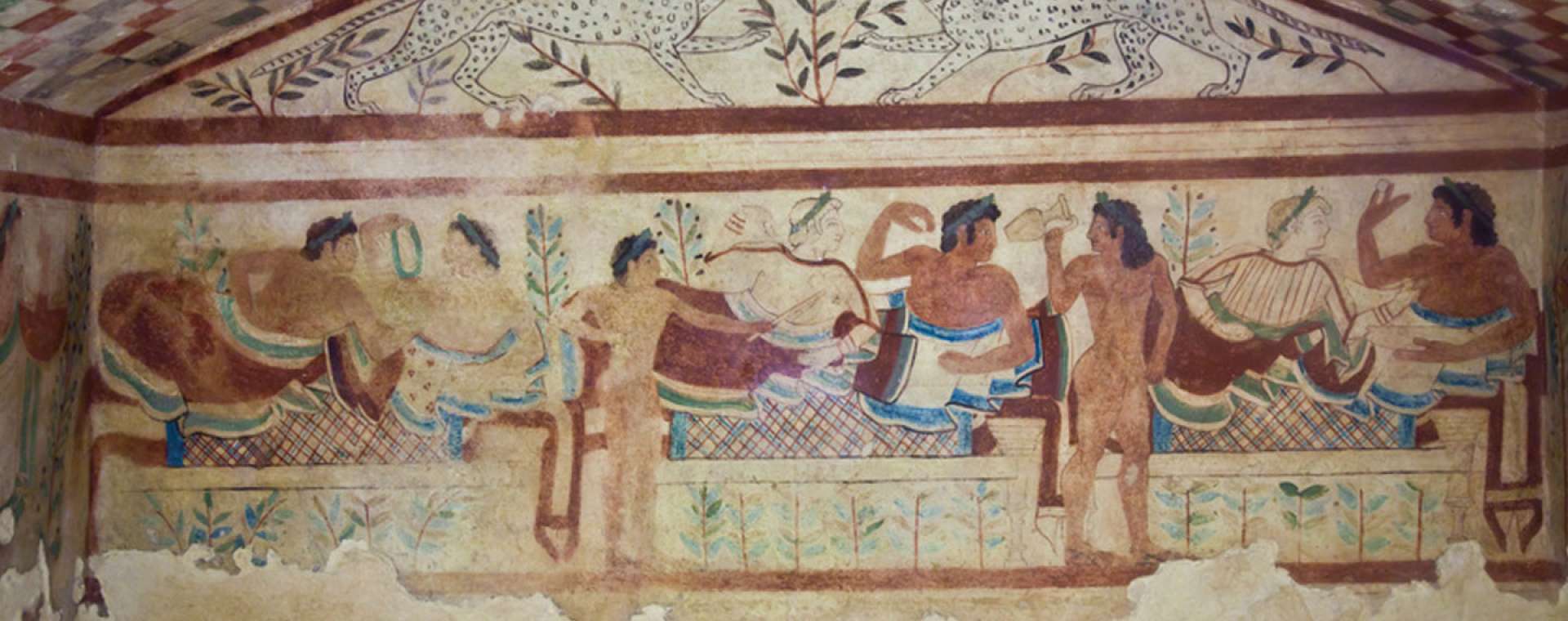As you travel the countryside around many of our Italy holiday rentals, you will encounter remains of the ancient Etruscan civilisation. These were the people who left their name to the region of Tuscany, after all.
The trouble is, they didn’t leave much else, either there or in Umbria, Lazio and even Campania, where they also ruled. So much of their lives and culture were destroyed or assimilated by the civilisation that followed them: the Romans.
Rome meets (and beats?) Etruria
Early Roman emperors including Augustus and Claudius mixed with descendants of Etruscan nobility. The Etruscans shaped the Romans, for sure. But they were also swallowed by them, from a historical perspective, making it hard to grasp what the Etruscans were all about as a civilisation.
On occasion, Rome deliberately destroyed Etruscan towns, including Veii (near Rome) in 396 BC, which they also buried. More often, they used soft power, negotiated, or played divide-and-rule with the locals. Significantly, when Hannibal invaded and almost conquered Rome in the 3rd century BC, most Etruscans sided with the Romans, rather than use the Carthaginian invasion as an opportunity to rebel.
Slowly but surely, Rome eased Etruscan culture out of the picture. Little of their written language survives, for example. The cultural destruction did not end with the fall of Rome or even the havoc of the Dark Ages. In the 1540s, Pope Paul III ordered almost 3,000kg (6,614 lbs.) of Etruscan bronzes melted down to decorate a church.
Even ancient writers, the likes of Herodotus and Dionysius of Halicarnassus, could not agree on who the Etruscans were, or where they originated. Modern DNA testing hasn’t helped much. In part, they will remain a mystery.
Etruscan tombs in Tuscany & Umbria
The major visible Etruscan legacy is their tombs. In death they were able to pass on most of what we know about Italian life in centuries before Ancient Rome.
Etruscan civilisation thrived in what is now Tuscany, Umbria and northern Lazio between the 7th and 2nd centuries BC. They replaced rural “Villanovan” culture with a sophisticated urban society based on allied, but independent, city-states.
Early Etruscan cities include those in northern Lazio, such as Tarquinia, Vulci and Roselle, as well as Orvieto, where they shared a common religious site called Fanum Voltumna. Later, centres of power also shifted northwards to Chiusi, Volterra and other places in present-day Tuscany.
Tomb finds tell us much about what Etruscans were like. For one, they were heavily influenced by Greek culture. Lots of pottery from Corinth and Athens has been found in Etruria.
Tomb remains also highlight differences between Etruscan city-states. Volterra was known for alabaster (and still is). Populonia was an iron mining centre. Vulci artisans were famed for bronzes.
Most spectacular of all are a relatively small number of painted tombs the Etruscans left. Of around 180 in total, 140 are in a single, vast necropolis outside Tarquinia. Part-symbolic and part-narrative, these vivid paintings reveal a people who enjoyed banqueting and hunting, dancing, sex, chariots and wine.
Stay near Etruscan sites in Tuscany & Umbria
Even if it’s not always obvious, the Etruscan legacy for Italy (and Europe) was significant.
The first kings of Rome, including Tarquinius (6th century BC), were Etruscan. The Etruscans probably invented gladiator games, and maybe boxing, too — even though we associate both with Romans.
Some of their legacy is plain weird. Etruscans thought they could predict the future by sacrificing a sheep and “reading” its liver.
Some of our Maremma villas are ideally sited to explore the mysterious “vie cave”, a network of sunken Etruscan roads around Pitigliano. Carved sarcophagi and funerary urns are exhibited in museums across Italy. Elaborate bronze mirrors were another common tomb find.
To dig deeper into Etruscan history, or in preparation for visiting tombs and other sites during a stay in one of our luxury villas in Tuscany, we recommend a little light reading...
-
“The Etruscans: A Very Short Introduction”, Christopher Smith (OUP): 130+ pages of digestible, engaging background
-
“Etruscan Places”, D.H. Lawrence: part travelogue, part archaeology, from an author who spent 1927 exploring Etruscan sites in Lazio and Tuscany
